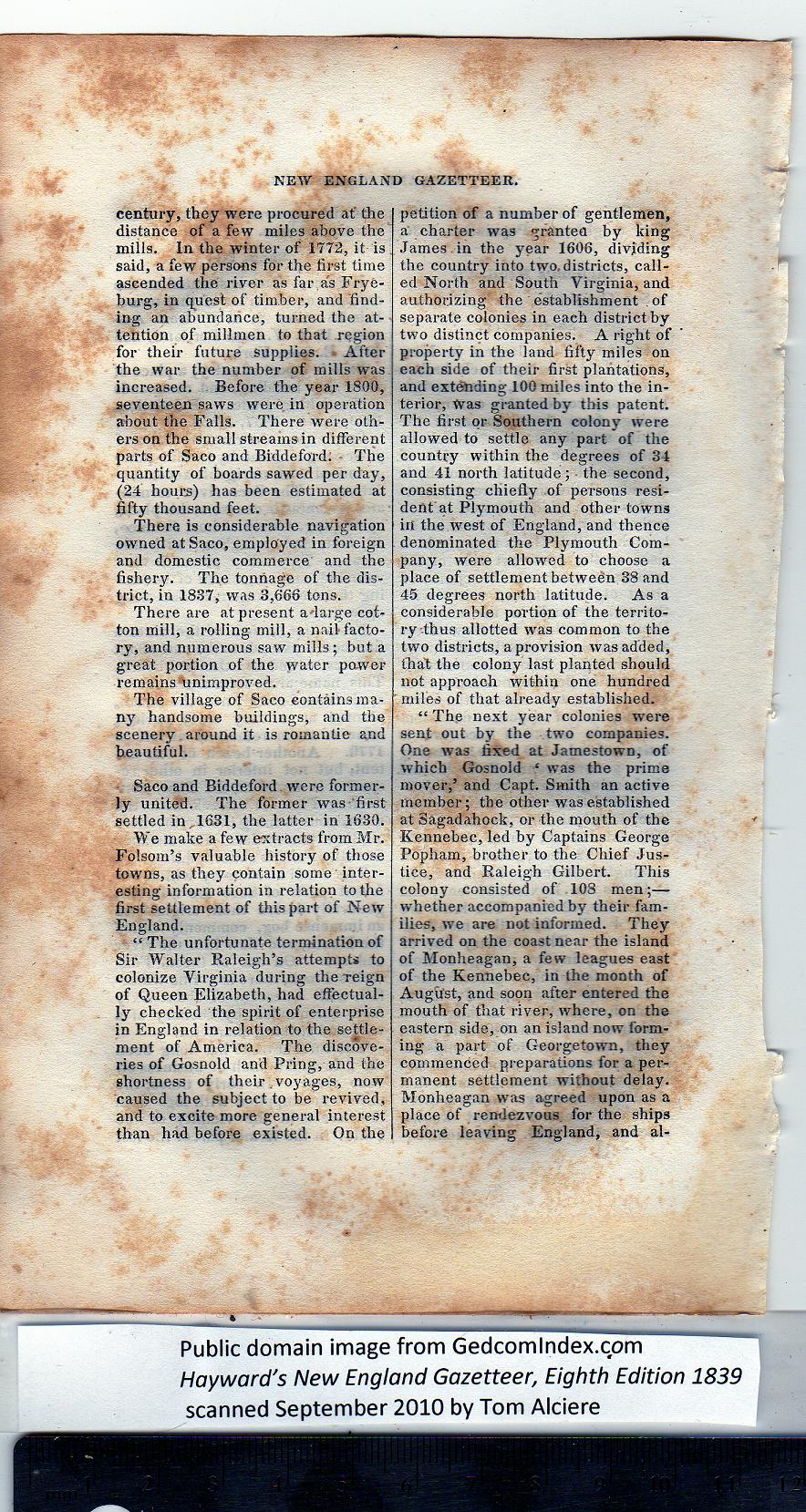|
century, they were procured at' the
distance of a few miles above the
mills. In the winter of 1772, it is
said, a few persons for the first time
ascended the river as far as Frye-
burg, in quest of timber, and find-
ing an abundance, turned the at-
tention of millmen to that region
for their future supplies. After
the war the number of mills was
increased. Before the year 1800,
seventeen saws were in operation
about the Falls. There were oth-
ers on the small streams in different
parts of Saco and Biddeford; The
quantity of boards sawed per day,
(24 hours) has been estimated at
fifty thousand feet.
There is considerable navigation
owned at Saco, employed in foreign
and domestic commerce and the
fishery. The tonnage of the dis-
trict, in 1837, was 3,666 tons.
There are at present a-large cot-
ton mill, a rolling mill, a nail facto-
ry, and numerous saw mills; but a
great portion of the water power
remains unimproved.
The village of Saco contains ma-
ny handsome buildings, and the
scenery around it is romantic and
beautiful.
Saco and Biddeford were former-
ly united. The former was first
settled in. 1631, the latter in 1630.
We make a few extracts from Mr.
Folsom’s valuable history of those
towns, as they contain some inter-
esting information in relation to the
first settlement of this part of New
England. |
“ The unfortunate termination of
Sir Walter Raleigh’s attempts to
colonize Virginia during the reign
of Queen Elizabeth, had effectual-
ly checked the spirit of enterprise
in England in relation to the settle-
ment of America. The discove-
ries of Gosnold and Pring, and the
shortness of their voyages, now
caused the subject to be revived,
and to excite more general interest
than had before existed. On the
petition of a number of gentlemen,
a charter was granted by king
James in the year 1606, dividing
the country into two.districts, call-
ed North and South Virginia, and
authorizing the establishment of
separate colonies in each district by
two distinct companies. A right of
property in the land fifty miles on
each side of their first plantations,
and extending 100 miles into the in-
terior, Was granted by this patent.
The first or Southern colony were
allowed to settle any part of the
country within the degrees of 34
and 41 north latitude; the second,
consisting chiefly of persons resi-
dent at Plymouth and other towns
in the west of England, and thence
denominated the Plymouth Com-
pany, were allowed to choose a
place of settlement between 38 and
45 degrees north latitude. As a
considerable portion of the territo-
ry thus allotted was common to the
two districts, a provision was added,
that the colony last planted should
not approach within one hundred
miles of that already established.
“ The next year colonies were
sent out by the two companies.
One was fixed at Jamestown, of
which Gosnold ‘ wa3 the prime
mover,’ and Capt. Smith an active
member; tbe other was established
at Sagadahock, or tbe mouth of the
Kennebec, led by Captains George
Popham, brother to the Chief Jus-
tice, and Raleigh Gilbert. This
colony consisted of 108 men;—
whether accompanied by their fam-
ilies, we are not informed. They
arrived on the coast near the island
of Monheagan, a few leagues east
of the Kennebec, in the month of
August, and soon after entered the
mouth of that river, where, on the
eastern side, on an island now form-
ing a part of Georgetown, they
commenced preparations for a per-
manent settlement without delay.
Monheagan was agreed upon as a
place of rendezvous for the ships
before leaving England, and al- |
